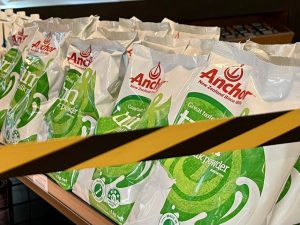
Food prices were 10.7% higher in November this year compared with November 2021, Stats NZ said today.
Compared with November last year, grocery food prices have increased by 10%, fruit and vegetable by 20%, restaurant and ready-to-eat meals by 8%, meat, poultry and fish by 12%, and non-alcoholic drink prices have seen a 7.8% rise.
Stats NZ consumer prices manager James Mitchell said that, like last year, grocery food prices are the largest contributor to this increase.
“Increasing prices for cheddar cheese, yoghurt, and standard two-litre milk were the largest drivers within grocery food,” Mitchell said.
Fruit and veg were the second largest contributor to the annual movement, with potatoes, onions and bananas influencing the inflation.
Compared with food prices in October of this year, Stats NZ said there had been barely any change. After adjusting for seasonal effects, they were up 1%.
Fruit and vegetables dropped 4.7% but saw a small 0.9% rise after adjustment for seasonal effects – onions (up 28%), potatoes (up 10%) and kiwifruit (up 26%) all had notable price increases.
A number of fruit and veg items also saw significant price falls, with notable products being tomatoes (down 42%), broccoli (down 44%) and strawberries (down 35%).
“It’s typical to see food prices fall in November due to falling fruit and vegetable prices. However, fruit and vegetable prices did not fall as much as in a typical November,” Mitchell said.
Stats NZ also said all other broad food groups rose in price. A 1.1% rise in grocery food was the biggest upwards contributor, led by yoghurt, potato chips and cheddar cheese.
It comes as the Reserve Bank of New Zealand is set to announce the new GDP on Thursday.
The rise in food prices is one of the many reasons why Kiwis are struggling at the moment – the increased cost of living has made it more difficult for many to afford their regular shop.
In November, the Reserve Bank hiked the OCR to 4.25%, and in October, Stats NZ reported that inflation was sitting at 7.2%.
Just yesterday, it was revealed that supermarkets are paying noticeably higher supply costs compared to the same time last year, according to new data from the GSCI.

























